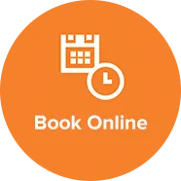Patient Information
At JYOTIKA DENTAL, we put your comfort and convenience first. Whether you prefer a personal touch in the office or the ease of connecting with us online or by phone, we make your experience simple, modern, and stress-free.

NEW PATIENT FORMS
Complete your forms online before your visit, or use your own device or our in-office iPad for a quick start.

PATIENT PORTAL
Securely view statements, update personal details, and pay balances anytime.

ONLINE BOOKING
Schedule appointments 24/7 through our website, or text/call us at +91 9878201293.
Dental Insurance & Payment Plans
Dental Insurance
The Jyotika Dental team prioritizes your dental needs and oral health. Dental treatment is an investment into the health and appearance of your smile. We always strive to inform you as comprehensively and transparently as possible of your options and costs prior to beginning your treatment program. Dental insurance works quite differently from medical insurance, and it can be confusing at times, but our team is here to help you understand it. Do you accept dental insurance? We work with most PPO dental insurances. We do not accept DMO/HMO, Medicaid, or Medicare. Does my dental insurance cover everything? Dental insurance does not cover everything you might need to eep your mouth in a healthy state. Dental insurance is NOT meant to be a “PAY-ALL”. It’s meant to be an aid in the financial obligation necessitated by dental care. Dental insurance is great, and having dental insurance means the treatment fee becomes discounted – meaning that your out-of-pocket expense is heavily reduced. There are so many dental insurance plans out there, and your coverage depends on what your employer purchased for you. Insurance companies have thousands of plans, and your employer purchases a dental plan exclusively designed for them. It is therefore your responsibility to understand your plan. We, of course, will help you to the best of our ability, but cannot be expected to know all the ins and outs of the plan your employer has purchased. How much is covered? It depends on your yearly maximum, your deductible, and how much your employer has chosento cover different procedure types. There are several categories of procedures, including: Preventive (cleanings and exams), Basic (fillings), Periodontics (deep cleanings and gum surgeries), Major(crowns and dentures), Endodontics(root canals), and Implants. Each of these categories is covered at a different percentage dictated by your insurance plan. Our insurance team will evaluate your insurance plan and work to get you the maximum reimbursement. Please remember that you are ultimately responsible for your account. Exceptions, exclusions, and downgrades? Your dental plan may also have exceptions, exclusions, and downgrades, again all depending on your plan. This in no way means that we will not treat you, and/or the treatment is not needed. Any deficiencies or problems in your individual plan are between you, your employer, and the insurance company. The Jyotika Dental team will help you in any way we can to maximize your insurance benefits and keep your out-of-pocket expenses to a minimum.Payment Plans
Different payment plans are available for different cases. In addition to payment plans, we work with CareCredit and Proceed to ensure you receive the dental care that you deserveHome Care Instructions for Healthy Teeth and Gums
Preventive dentistry begins at home. While professional cleanings every six months are essential, daily care is key to keeping your teeth and gums healthy.
Brushing
Brushing removes plaque—a harmful layer of bacteria that produces acid when it comes into contact with food, leading to cavities. Brush at least twice a day using gentle, circular motions. Avoid brushing immediately after meals; wait about 30 minutes to allow your enamel to re-harden after exposure to acidic foods and drinks.
Additional Tips
Use fluoride toothpaste to strengthen enamel.
Don’t forget to brush your tongue to remove bacteria and freshen breath.
Replace your toothbrush every 3–4 months or sooner if bristles are frayed.

Brushing Your Teeth
Apply a pea-sized amount of toothpaste to your toothbrush.
Hold the brush at a 45-degree angle to your gums. Use gentle pressure so the bristles aren’t flattened; the tips of the brush do the cleaning.
Move the brush in small circular motions, cleaning each tooth individually. Don’t forget the spaces between teeth and along the gum line.
Repeat for the inside surfaces of your teeth facing the tongue.
For the inside of the front teeth, move the brush up and down, then in small circles.
Brush the chewing surfaces thoroughly to reach the grooves.
Brush your tongue to remove bacteria; a specialized tongue scraper can also be used.
Rinse your mouth and spit.
Replace your toothbrush every 3–4 months or sooner if bristles are worn.
Flossing Your Teeth
Floss at least once a day, ideally at night.
Use 12–18 inches of floss, wrapping it around your middle fingers and leaving about 1 inch to work between teeth.
Guide the floss with your index fingers, gently inserting it between teeth. Avoid pressing too hard into your gums.
Curve the floss into a C-shape around each tooth and move it up and down to remove plaque.
Shift to a fresh section of floss for each tooth.
Mouth Rinsing
Use a therapeutic mouthwash to eliminate bacteria and help prevent plaque and gum disease.
Swish for 30–60 seconds. Gargling is optional but can add extra cleaning.
Optional Tools & Natural Remedies
Water flossers can help remove debris along the gum line, between teeth, and in grooves.
Natural oils like tea tree, eucalyptol, or menthol can be swished around the mouth to fight bacteria.
Baking soda diluted with water is safe for brushing occasionally—never use it undiluted, as it can irritate gums.
Healthy Eating for Strong Teeth and Gums
Include a variety of nutritious foods in your diet.
Limit starches and sugars, including candy, cakes, chips, crackers, dried fruits, and sweetened snacks, which can contribute to cavities.


